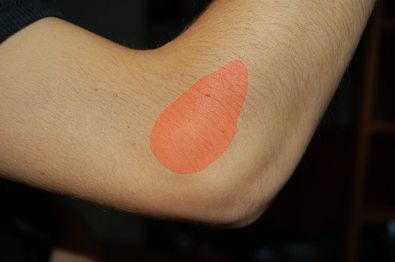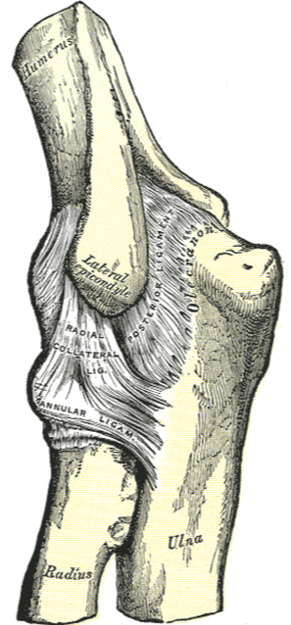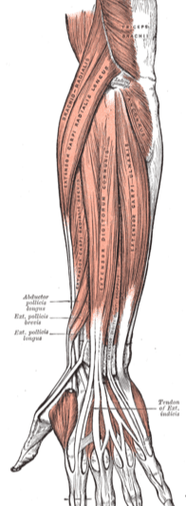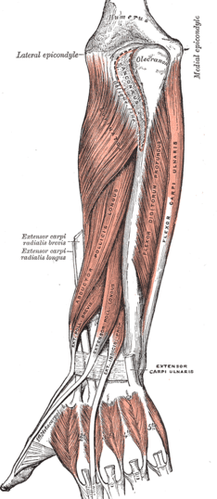LATERAL EPICONDYLITIS
(TENNIS ELBOW, EXTENSOR TENDINOSIS, ELBOW TENDINOSIS)
In over two decades of practice, I have never one time seen a case of ‘Tennis Elbow’ caused from playing too much tennis. Maybe in Florida or California, but not here in the Ozarks! Despite this fact, I treat lots of people suffering with Tennis Elbow. The proper name for Tennis Elbow is Elbow Extensor Tendinosis, or even more commonly, Lateral Epicondylitis. If you do not know the difference between Tendinitis and Tendinosis and are still referring to this problem as Elbow Tendinitis, it is critical for you to understand the distinction. Please spend a few minutes on our TENDINITIS -vs- TENDINOSIS page.
Tendinosis of the elbow’s extensor tendons is far more common than tendinosis of the elbow’s flexor tendons (MEDIAL EPICONDYLITIS). All of the major extensor muscles of the elbow have one attachment point. This point is called the Common Elbow Extensor Tendon and is at the elbow’s Lateral Epicondlyle. Let me show you two ways to find it.
- Hold both arms out in front of you like Frankenstein. Now bend one arm 90 degrees and grab hold of your other elbow. Your middle two fingers will be grasping in the area of the Common Extensor Tendon. Now, move your fingers so that they are just above the knob of bone there (the Lateral Epicondyle). This is the origin of the Common Extensor Tendon and may be tender or even painful to the touch.
- Pretend that you are revving a motorcycle. Grab the hand throttle and give it some gas. Now really crank that throttle open. As your knuckles move back toward your forearm, you will begin to see and feel a ball of muscle on the outside of your elbow. This is the Common Extensor Tendon.
The Common Extensor Tendon (Lateral Epicondyle) is the most common place to find Tendinosis in the elbow, and is where all of the various elbow extensor muscles attach. Extensor Tendinosis of the Elbow is extremely common and is caused chiefly by overuse / abuse. This overuse is usually in the form of things that involve gripping, grabbing, pulling, or twisting. Please visit our TESTIMONIAL PAGE for Elbow Tendinosis.
Wolff’s Law of Anatomy and Physiology states that, “Bones grow in response to mechanical stresses on a joint — whether said stress is god or bad“. Because there are so many muscles attaching to the Lateral Epicondyle, there is a great deal of normal mechanical stresses put on this portion of the elbow. The bone in this area grows in response to this normal stress. Thus, you can see how / why the Epicondyles are enlarged.
LATERAL EPICONDYLITIS
| TENNIS ELBOW FOUND HERE |
 |
| The red mark represents the most common place to find Lateral Epicondylitis (Tennis Elbow). However, it can be found in other places, as well as being caused by FASCIAL ADHESIONS far removed from the site of the tendon itself. RIGHT: If you look carefully at this picture from Gray’s Anatomy, you will see that the Lateral Epicondnyle can be seen as a round extension of bone in the middle of all the ligaments. The outcropping of bone on the far right of the diagram is the Olecranon Process on the back of the elbow. The MEDIAL EPICONDYLE can be seen in our next page. |
| LIGAMENTS & BONES OF THE LEFT ELBOW |
 |
FOREARM / ELBOW EXTENSOR MUSLCES
All of the Forearm Extensor Muscles (whether superficial or deep) originate from one point. This point is called the Common Extensor Tendon, and is the area of pain in Tennis Elbow or Lateral Epicondylitis.
| SUPERFICIAL EXTENSOR MUSCLES |
 |
| THE CHIEF CULPRIT OF THE PAIN OF LATERAL EPICONDYLITIS? |
 |
| (You can only see a little bit of it in this pic) The ECRB (Extensor Carpi Radialis Brevis) is a deep forearm extensor muscle that is most frequently associated with the pain of Lateral Epicondylitis. The ECRB attaches, via the Common Extensor Tendon, to the lateral epicondyle of the humerus. The tendon ends at the base of the middle finger. |
| DEEP ELBOW EXTENSOR MUSCLES |
 |
